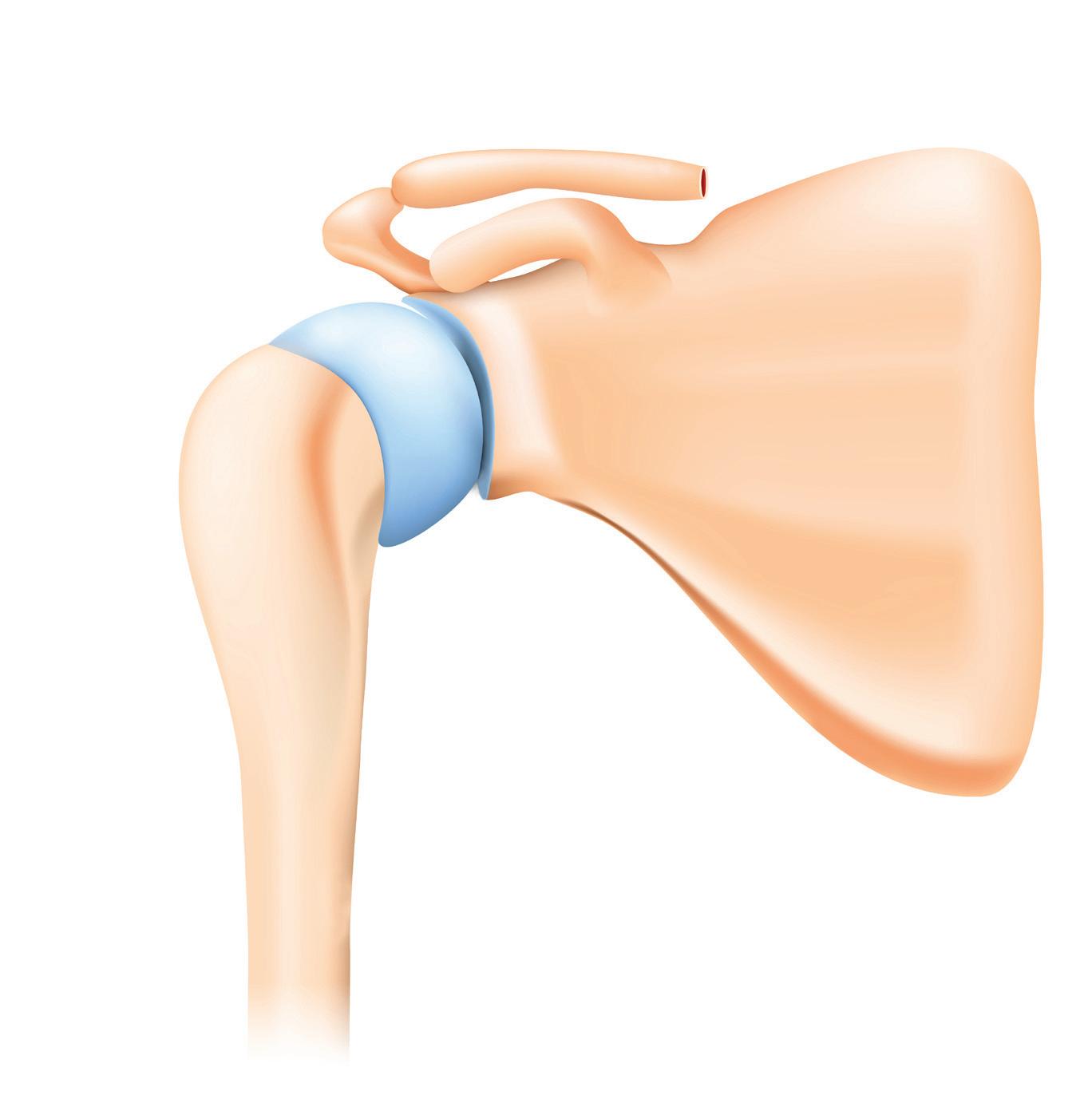
2 minute read
HOW TO FIX A FROZEN SHOULDER. An
Clavicle (collarbone)
Shoulder Capsule
Humerus (upper arm)
Scapula (shoulder blade)
HOW TO FIX A FROZEN SHOULDER
AN ORTHOPEDIST CAN HELP WITH THIS PAINFUL CONDITION.
Frozen shoulder, a condition that affects approximately 2 to 5 percent of the general population, causes pain and immobilization in the shoulder joint. Nicole Lopez, MD, an orthopedic surgeon at Clara Maass Medical Center and a member of RWJBarnabas Health Medical Group, provides guidance on its symptoms and treatment.
What is frozen shoulder?
Frozen shoulder, also known as adhesive capsulitis, is a treatable condition in which a patient’s shoulder capsule— the tissue that surrounds the three main bones of the shoulder joint—thickens and tightens such that the patient gradually loses the ability to move their arm and shoulder.
NICOLE LOPEZ, MD What are the main symptoms?
“Patients with frozen shoulder experience pain and limitation in motion,” explains Dr. Lopez. “In early frozen shoulder, that can be limited to the top of their range of motion, and then they may find that motion gets tougher as the condition progresses.”
What causes it?
“While the definitive cause is unknown, it often occurs after prolonged immobilization,” she says. Patients who experience frozen shoulder often start with a minor shoulder sprain or injury and, as a result, avoid moving their arm. Frozen shoulder can develop from that lack of movement.
To learn more about orthopedic services at Clara Maass Medical Center, call 973.450.2000 or visit www.rwjbh.org/ortho.
How is frozen shoulder diagnosed?
An orthopedist will physically examine the patient’s shoulder and assess both passive range of motion (the doctor’s ability to move the shoulder) and active range of motion (the patient’s ability to move their shoulder). With a frozen shoulder, soft tissue limits motion, so passive motion is not any greater than active motion. If the injury were a tear or fracture, passive motion would be greater than active motion.
How is it treated?
“Early mobilization in the form of physical therapy is key, combined with anti-inflammatories for pain,” Dr. Lopez recommends. “In some cases, we can try a steroid injection to get the tissues to calm down. And in severe cases, when other options have failed, surgery is performed to remove any tissue that is limiting motion in the muscles surrounding the shoulder.”
It’s possible for frozen shoulder to improve on its own. “However, if you don’t seek treatment to restore your motion, there’s a high probability the condition will get worse before it gets better,” she notes.
How long does it take for frozen shoulder to improve?
“For patients who consistently attend physical therapy, you will start to see some loosening up typically by weeks two to six,” says Dr. Lopez. “It normally does go away completely, but it can take several months to a year to subside. Early diagnosis and early treatment, followed by physical therapy and at-home exercise, is the best course of action.”
If you’re experiencing a problem with your shoulder and there’s no improvement with typical at-home treatments like heat, ice and rest, get it evaluated within the first three to five days, she advises.










